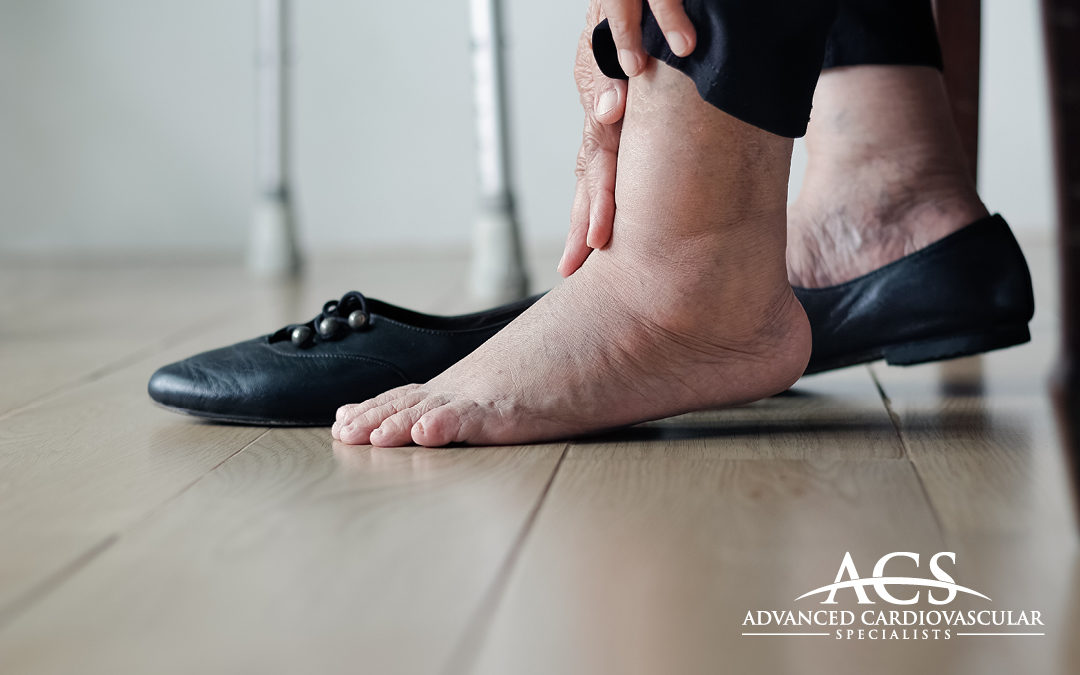Venous insufficiency occurs when the valves in your veins stop working properly, causing blood to flow backward and pool in your legs, rather than flowing normally back up to your heart. This insufficient blood flow can also affect the veins in the arms, but it is most commonly seen in the legs. Although it is usually non-limb threatening, it can become a painful, chronic condition. Diagnosis and treatment are essential to prevent complications.
Causes of Venous Insufficiency
Blood clots are the most common cause of venous insufficiency. When a clot forms in the deep veins of the leg (deep vein thrombosis), blood flow is obstructed, leading to a buildup of blood in the vein and venous insufficiency. It can also occur when the valves in the leg veins become damaged, which can result from a number of risk factors.
Risk factors for venous insufficiency include:
- Blood clots
- Varicose veins or a family history of varicose veins
- Obesity
- Smoking
- Long periods of inactivity, especially sitting or standing
- Pregnancy
- Age (over 50)
- Being female
Symptoms of Venous Insufficiency
Although many people experience mild symptoms, it is important to seek treatment immediately to avoid potentially serious complications. Venous insufficiency will not resolve without intervention.
Symptoms of venous insufficiency include:
- Swelling in the legs or ankles
- Aching or throbbing in the lower legs
- Varicose veins
- Pain when walking that stops with rest
- Tight feeling in the calves, leg cramps and/or muscle spasms
- Restless leg syndrome
- Itchy skin on the legs
- Flaking and/or brown-colored skin, especially around the ankles
- Leg ulcers
Diagnosis and Treatment of Venous Insufficiency
Your doctor will undertake a physical exam and complete a medical history. He or she may also schedule a vascular ultrasound to examine the blood circulation in your legs. This is a noninvasive test using sound waves to create an image of your veins.
Treatment will depend on the severity of your condition, but possible treatment options include:
- Wearing compression stockings
- Blood thinners to prevent the formation of new blood clots
- Antibiotics to treat skin infections or ulcers
- Endovenous thermal ablation to close off veins
- Sclerotherapy for the treatment of spider veins and varicose veins
- Ambulatory phlebectomy, a minimally invasive procedure to remove affected veins
- Surgical intervention to cut and tie off veins (vein ligation and stripping)
- Vein bypass to reroute blood around the problem vein
Venous Insufficiency Prevention
Simple lifestyle changes can help avoid developing venous insufficiency or help you recover if you have venous insufficiency already.
- Maintain a healthy weight, or lose weight if you are overweight.
- Get regular exercise.
- Don’t smoke, or quit if you do smoke.
- Don’t sit or stand without moving for long periods of time.
- Practice good skin hygiene.
- Elevate your legs when sitting or lying down.
- Wear compression stockings.
- Resolve any skin infections properly through medical treatment.
The team at Advanced Cardiovascular Specialists consists of North Louisiana’s leading experts in cardiovascular care. To schedule an appointment, please call our office at 318-798-9400.

